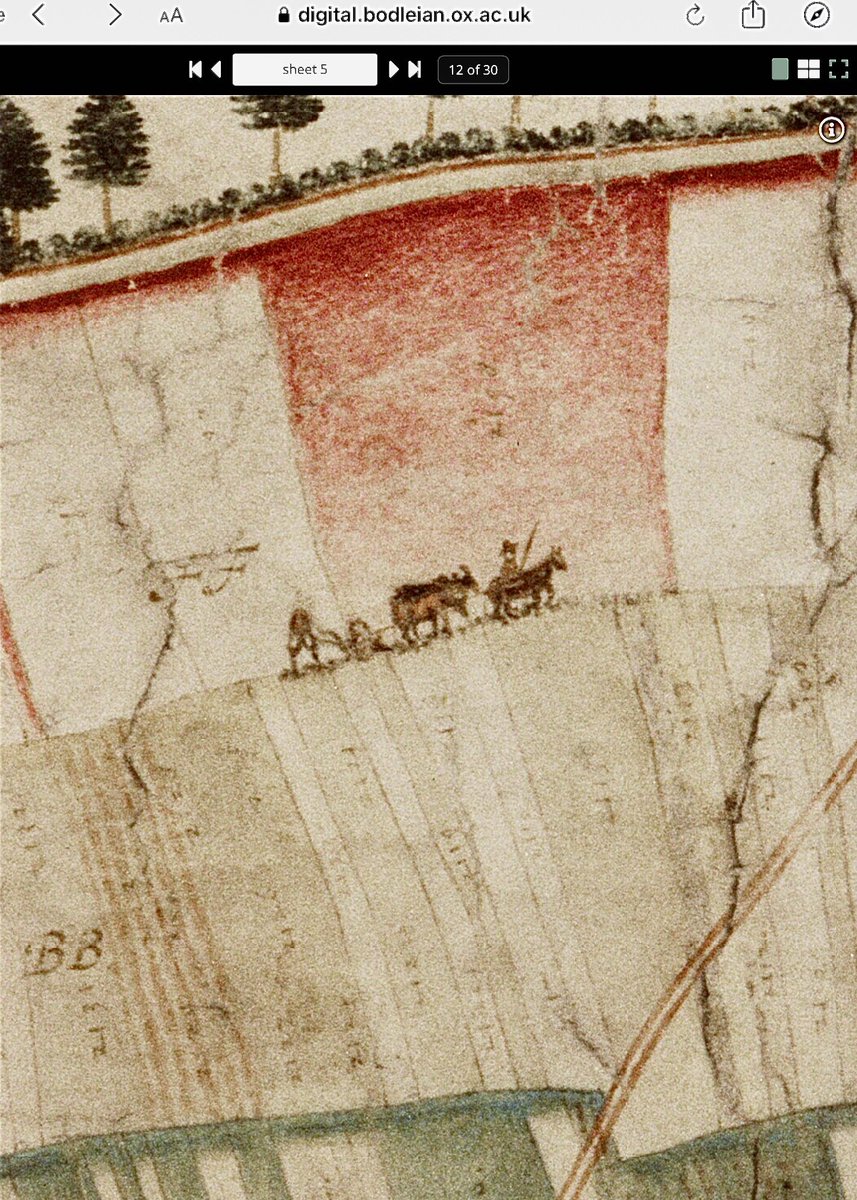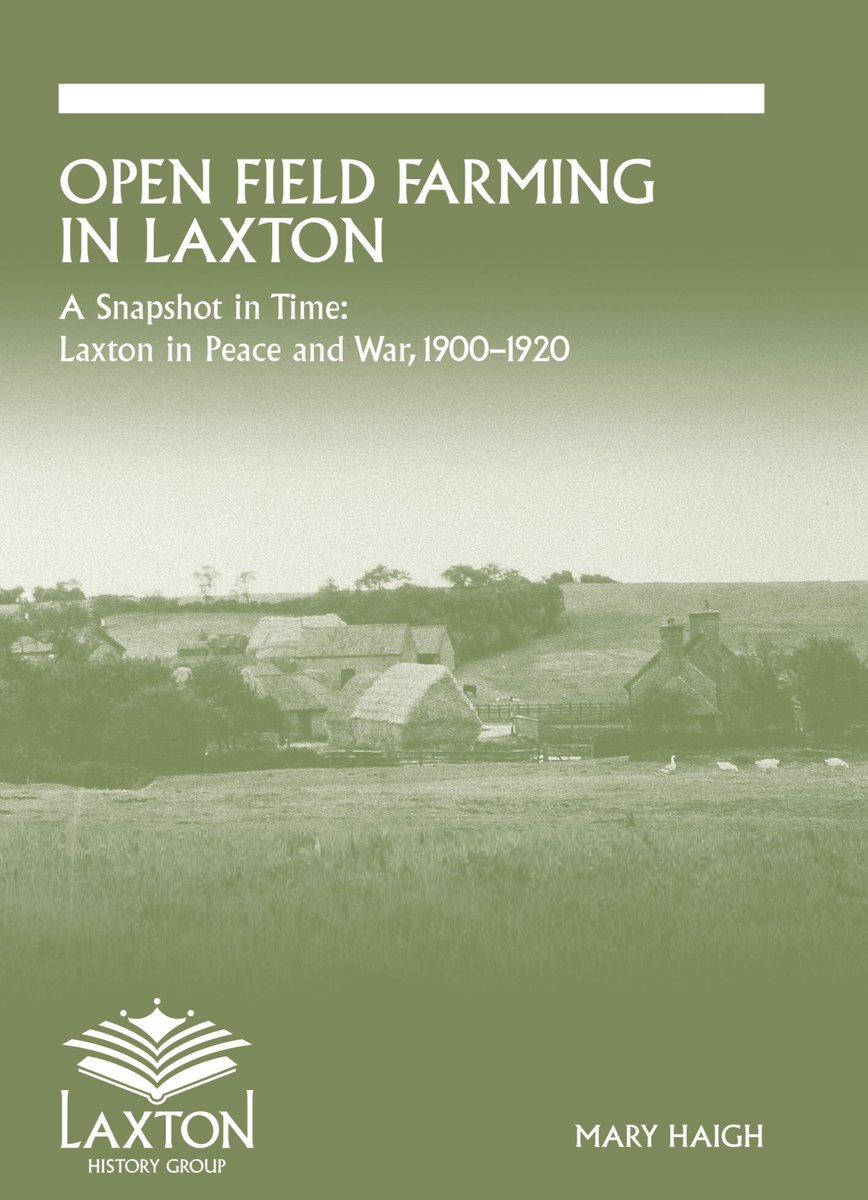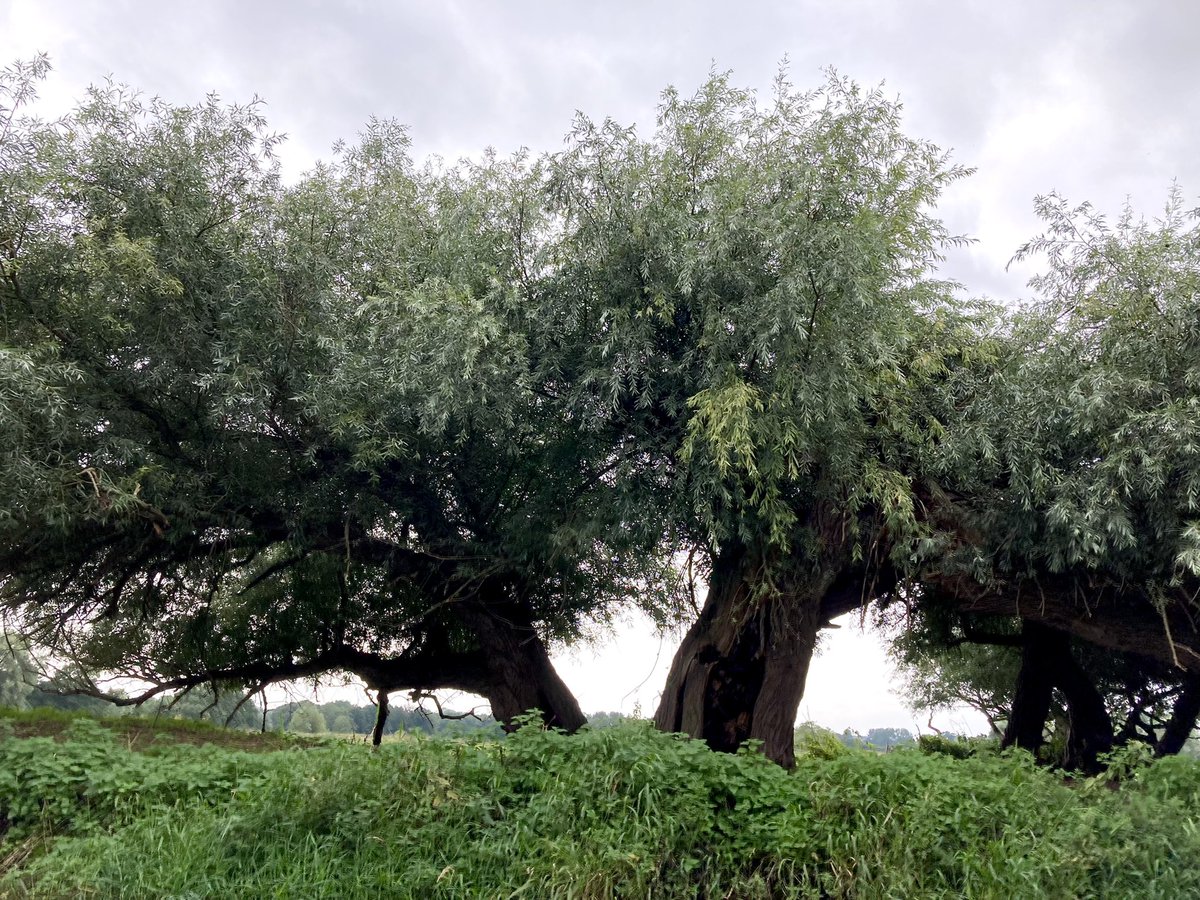
Short🧵. As many people know, Laxton, in Nottinghamshire, is one of the few places in England where large-scale #medieval open #fields survive, still collectively organised & managed in the same way that they were 6 and more centuries ago. … /1 

The term ‘open fields’ has become shorthand for large (often huge) areas of arable, subdivided into unhedged blocks (‘furlongs’), subdivided in turn into narrow strips (‘selions’). #medieval #landscape. /2 

And the strips (selions) in each furlong were shared out, one by one in repetitive order, between the village’s farmers. This 1617 map from Balsham, Cambs., names of the farmer of each strip. By 1617 some had acquired & merged neighbouring strips, others had subdivided theirs. /3 

At any rate, one of Laxton’s ✨charms✨ for #medieval #landscape #history is the way that both landscape AND farming arrangements have survived into the modern period. Here, earlier 20thC farmers have a chat before they start ploughing their strips (nottingham.ac.uk/manuscriptsand…). /4 

And here’s an earlier farmer taking his own plough onto Laxton’s fields around 400 years earlier on a wonderfully detailed map of 1635 (via @bodleianlibs iiif.bodleian.ox.ac.uk/iiif/viewer/8e…) /5 

The system is run by the Court Leet - made up of all those holding land in the open fields &/or rights of common. They meet each year at the end of Nov. when their representatives walk the fields to check that boundaries, roads & ditches are maintained. laxtonnotts.org.uk/Laxton%20manor… /6 

And here’s an account of the survey of the fields in 2008 - nottingham.ac.uk/manuscriptsand… /7 

Laxton History Group have produced a beautifully illustrated, very readable & impressive book on the fields - downloadable! 🙌🙌. It includes the history of the fields as well as their more modern management : laxtonhistorygroup.org.uk/Booklets/LHG-H… /8 



And finally, just in case you might be interested in the origins of #medieval #open #fields 🤗 …. END
https://twitter.com/drsueoosthuizen/status/1174997341377630208
• • •
Missing some Tweet in this thread? You can try to
force a refresh










